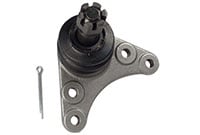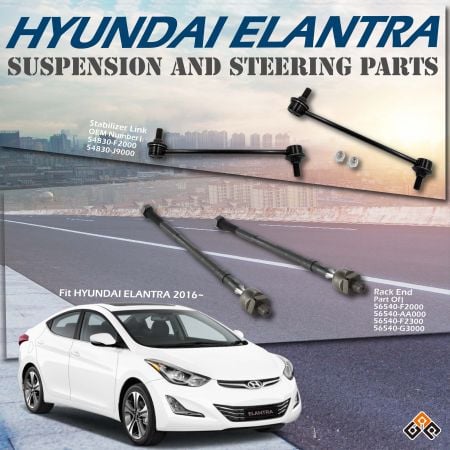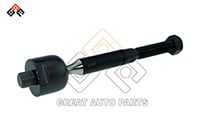Proven Ball Joint Maintenance Tips to Extend Their Lifespan
Ball joints play a crucial role in your vehicle's suspension system. These components connect the control arms to the steering knuckles, enabling the wheels to pivot while maintaining a stable connection to the vehicle. Proper ball joint maintenance is essential not only for smooth driving but also for safety.
However, like any mechanical part, they wear out over time and can cause significant problems if left unchecked. Ball joints are essential for your vehicle’s safety, stability, and overall performance, so maintaining them is key to avoiding costly repairs down the road.
In this guide, we’ll dive deep into what ball joints are, the common signs of wear, how to keep them in top condition, and what to do when they need replacement. By following these maintenance tips, you’ll ensure a longer lifespan for your ball joints, keeping your car running safely and smoothly.
What Are Ball Joints and Why Are They Important
Ball joints are like the pivot points that connect your vehicle's control arms to the steering knuckles, allowing for up and down movement as well as turning. Much like the hip joint in a human body, ball joints help ensure smooth wheel movement, which is essential for proper steering and suspension. Without well-functioning ball joints, your vehicle's handling could become loose, making driving unsafe.
For more detailed information about how ball joints affect your vehicle, check out our other FAQ about Ball Joint
How Often Should I Inspect My Ball Joints
Even with proper maintenance, ball joints will eventually wear out. On average, they last anywhere from 70,000 to 150,000 miles, depending on driving conditions, vehicle type, and maintenance practices. If you notice any of the warning signs mentioned earlier—such as clunking noises, excessive vibration, or uneven tire wear—it’s likely time to replace the ball joints.
Failing to replace worn ball joints can lead to more significant damage. If a ball joint fails completely, your suspension could collapse, causing a dangerous situation. That’s why it’s crucial to have a trusted mechanic inspect your suspension system if you suspect your ball joints are at the end of their life.
It's recommended to inspect your ball joints every time you change your vehicle's oil or hear unusual noises while driving. Routine inspections help catch wear early, preventing potential suspension failures. Early detection is key to keeping repair costs low and maintaining vehicle safety.
When to Replace Ball Joints
Even with proper maintenance, ball joints will eventually wear out. On average, they last anywhere from 70,000 to 150,000 miles, depending on driving conditions, vehicle type, and maintenance practices. If you notice any of the warning signs mentioned earlier—such as clunking noises, excessive vibration, or uneven tire wear—it’s likely time to replace the ball joints.
Failing to replace worn ball joints can lead to more significant damage. If a ball joint fails completely, your suspension could collapse, causing a dangerous situation. That’s why it’s crucial to have a trusted mechanic inspect your suspension system if you suspect your ball joints are at the end of their life.
How Do I Check the Condition of My Ball Joints
You can perform a simple check to determine if your ball joints are in good condition:
- Driving Test
Take your vehicle on a drive and listen for clunking sounds or vibrations. Loose ball joints can cause noticeable steering wheel movement or noise. - Visual Inspection
Jack up your vehicle, use a flashlight, and inspect for rust, a torn dust boot, or excessive play. Use a pry bar to test the joint’s stability—any looseness is a sign that replacement is necessary.
Signs of Worn Ball Joints You Shouldn’t Ignore
Just like any other car part, ball joints wear out over time. When they do, they can lead to serious issues, affecting your vehicle's handling, alignment, and safety. Here are some common signs that indicate your ball joints may be in need of maintenance or replacement:
| Sign of Worn Ball Joints | Description |
Clunking or Knocking Noises | A distinct clunking or knocking sound from the front end when driving over bumps or uneven surfaces, caused by loose ball joints. |
Steering Wander | The vehicle pulls to one side, making it hard to drive in a straight line due to loose ball joints, leading to misalignment. |
Excessive Vibration | Unusual vibrations felt in the steering wheel or through the floor, especially at high speeds or on rough terrain, caused by unstable suspension. |
Uneven Tire Wear | Wheels are out of alignment, leading to uneven tire wear, particularly on the inside or outside edges, reducing tire life. |
Squeaking or Creaking Noises | Early signs of ball joint wear, producing squeaking or creaking noises, especially when turning or going over speed bumps, due to damaged rubber boots. |
Damaged Suspension Components | Visible damage such as scratches, rust, or wear on suspension parts near the ball joints, indicating possible ball joint failure. |
How to Maintain Your Ball Joints for Longer Lifespan
Now that you know the warning signs, it’s important to keep up with regular ball joint maintenance to extend their lifespan and prevent major issues. Here are some proven tips for maintaining your ball joints
| Ball Joint Maintenance Tip | Description |
Regular Inspections | Inspect ball joints during every routine maintenance check, especially after driving on rough roads. Mechanics can detect early signs of wear. |
Greasing Your Ball Joints | For ball joints with Zerk fittings, grease them regularly to reduce wear. For sealed joints, inspect rubber boots to prevent contamination. |
Avoid Driving Aggressively | Avoid hard impacts like hitting potholes or curbs to prevent accelerating wear on ball joints. Drive slowly on rough terrain and uneven surfaces. |
Monitor Tire Wear | Check tire tread regularly for uneven wear, which could indicate ball joint or alignment issues that need immediate attention. |
Can I Replace My Ball Joints Myself
Replacing ball joints can be challenging, especially if they’re integrated with the control arm or rusted. If you have the necessary tools (e.g., a torque wrench, jack, pry bar) and mechanical knowledge, you may be able to do it yourself. However, if you're unfamiliar with suspension components, it's best to consult a professional mechanic to ensure a safe replacement.
Is It Better to Replace Both Ball Joints Together
Yes, it is often better to replace ball joints in pairs, especially those on the same axle. Ball joints experience similar conditions, meaning if one fails, the other is likely not far behind. Replacing both ensures balanced performance and avoids additional labor costs later.
What Makes Some Ball Joints Last Longer Than Others
Not all ball joints are built equally, and the longevity of your ball joints depends heavily on the quality of the materials and manufacturing processes used. Ball joints made from high-grade alloy steel, coupled with precision heat treatment, are far more durable and resistant to wear and tear. Investing in high-quality ball joints ensures better performance, extended service life, and increased reliability for your vehicle.
At Great Auto Parts , we prioritize producing top-tier suspension components that stand the test of time. Our ball joints are designed with OE-based dimensions for perfect fitment, simplifying installation and improving the overall driving experience. The heat-treated bolts provide exceptional strength and durability, ensuring your suspension performs well even in the toughest conditions.
Our products undergo high-strength pull-off testing and are engineered with low axial clearance values, which not only enhance their performance but also extend their lifespan. Whether you're an auto enthusiast, part of a racing team, or a vehicle customization shop, our ball joints deliver the strength and precision needed for superior handling and safety.
By choosing Great Auto Parts ball joints, you’re making a smart investment in long-lasting, reliable suspension components that help keep your vehicle running smoothly and safely.
Conclusion: Keep Your Ball Joints in Top Shape
Ball joints are a small but critical component of your vehicle's suspension system. By keeping up with regular inspections, greasing them properly, and addressing any warning signs early, you can extend their lifespan and avoid costly repairs.
Whether you choose to maintain your ball joints yourself or rely on a professional, staying proactive is key. Don’t ignore clunking noises, steering issues, or uneven tire wear—address these symptoms as soon as they appear to ensure your vehicle remains safe, stable, and smooth for miles to come.
If you suspect your ball joints need attention, schedule a check-up with your mechanic today. A small investment in maintenance now can save you from much bigger problems later on. For those looking for the best in suspension performance, Great Auto Parts offers OE-based, high-quality ball joints that provide reliable and durable solutions for all your suspension needs.




